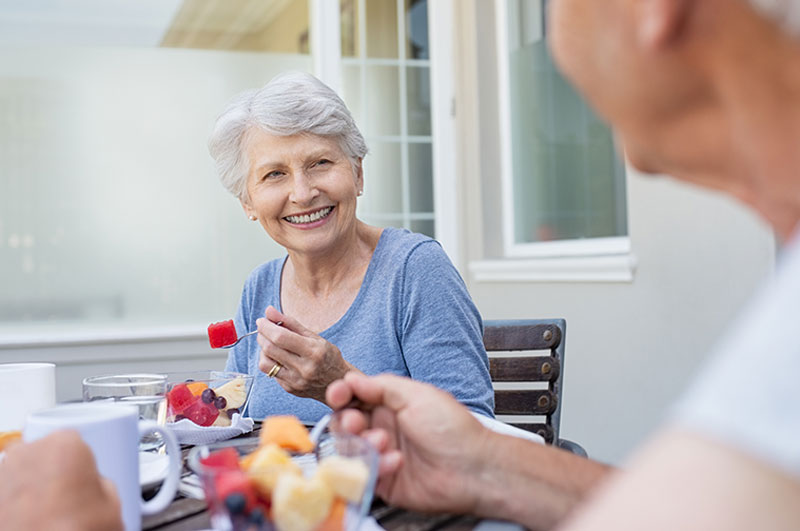
Learn about the recommended daily fiber intake for seniors.
If the seniors in your life are more inclined to indulge in the many junk and fast food choices which are so readily available, they are in good company. Even though these types of foods are convenient, they are oftentimes full of calories, cholesterol and fat and lack fiber along with other key nutrients that are essential to nourish aging bodies. The fact is, as few as 5% of us are getting the recommended daily fiber amounts – something extremely important for the elderly.
Key Reasons Why Fiber Is Important
Fiber’s many health benefits include:
- Weight management: Low in calories and slower to digest, foods that are typically an excellent source of fiber help people to feel fuller longer.
- Lowered cholesterol: With fiber in the digestive tract, the body absorbs lower levels of cholesterol.
- Blood sugar consistency: Because high-fiber foods take more time to be digested, steady glucose levels can be sustained.
- Better digestive tract functioning: Fiber in the gastrointestinal tract stimulates the intestines, reducing problems from constipation.
- Decreased cancer risk: Sufficient amounts of fiber in the diet help defend against certain types of cancer, such as colon cancer.
Recommended Daily Fiber Amounts and Tips on How to Boost Fiber Intake
If a senior’s diet has been lacking in adequate levels of fiber, it’s important to incorporate more fiber slowly. Introducing a lot of fiber all at once may cause bloating, gas, and other side effects. Help older adults build up fiber intake gradually, while making certain to consume lots of water as well, which will help cut down on unwanted symptoms.
The following high-fiber foods are a fantastic place to begin. Remember that ideally, it is recommended that adults should be consuming 14 grams of fiber for every 1,000 calories consumed every day, which equates to approximately 24 grams for females and 38 grams for males.
- Apples (4.4 grams in one raw, medium-sized apple)
- Raspberries (6.5 grams per cup)
- Pears (5.5 grams in a single raw, medium-sized pear)
- Strawberries (3 grams per cup)
- Avocado (10 grams per cup)
- Bananas (3.1 grams in one medium-sized banana)
- Carrots (3.6 grams per cup)
- Broccoli (2.4 grams per cup)
- Beets (3.8 grams per cup)
- Brussels sprouts (3.3 grams per cup)
- Artichoke (6.9 grams in a single raw globe)
- Kidney beans (12.2 grams per cup, cooked)
- Lentils (13.1 grams per cup, cooked)
- Chickpeas (12.5 grams per cup, cooked)
- Split peas (16.3 grams per cup, cooked)
- Oats (16.5 grams per cup, raw)
- Popcorn (1.15 grams per cup, popped)
- Quinoa (5.2 grams per cup, cooked)
- Almonds (4 grams per 3 tablespoons)
- Sweet potatoes (3.8 grams per medium-sized boiled potato without skin)
- Dark chocolate (3.1 grams per 1-ounce piece)
With a multitude of options to satisfy each senior’s particular taste, it’s not hard to add more fiber to the diet and enhance senior health.
At Live Free Home Health Care, providers of home care in Gilford, CT and the surrounding areas, we know how a well-balanced diet for older adults helps safeguard general health and wellness so that seniors can continue to live engaged and active lives. Our highly-trained care team is here to help encourage healthy eating and snacking habits for older adults and provide companionship during meals, and any other time, day or night. Our care team will also grocery shop, plan and prepare nourishing snacks and meals which are personalized to specific dietary restrictions or needs, and even clean up the kitchen afterwards.
To discover all about the many ways Live Free Home Health Care, top providers of home care in Gilford and surrounding areas, can help a senior you love maintain healthy eating habits and much more, email or call us at 603-217-0149 to schedule a free in-home consultation. For a full list of the communities we serve, please visit our Service Area page.
